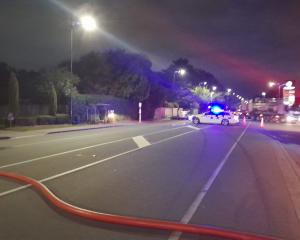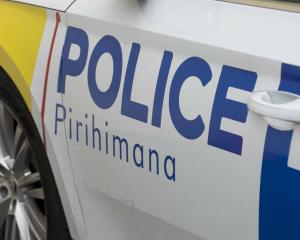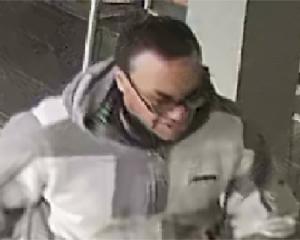
All six skydivers, their six instructors and the pilot of Skydive Taupo's Pacific Aerospace 750XL had to abandon the plane at 2000ft before it crashed into the lake near Rotongaio Bay on Wednesday.
Talking to media for the first time since the crash, instructor Joe Dyson, 29, conceded his first jump today was "a bit shaky".
The skydive company reopened today after being grounded due to the lack of an available aircraft yesterday.
Being mentally prepared had helped him with the emergency jump, he said.
"We've all kind of played through that scenario in our heads a few times - we cover it quite a lot in training.
"We cover that pretty extensively and then obviously taking it on as a career, you just get used to the risks and prepare to take other people's lives into your own hands - the training's pretty thorough."
Mr Dyson said he had survived a couple of parachute failures before, but never an aircraft failure.
The ascent had started normally, Mr Dyson said, until he heard what he described as "a loud bang" at 2500ft, or 762m.
That was followed by sparks flying past the aircraft's windows and "the worst grinding noise I've ever heard in my life as the propeller stopped".
The aircraft then fell silent, followed by a frantic discussion between the pilot and the six instructors.
"Then the decision was made that we all needed to exit ... I just heard the big booming 'Get out!' And so we began hooking up our passengers. I was the third group out, there were a couple of guys on my left and I moved past them on the way to the door."
Mr Dyson said he activated his reserve chute on exit and then exchanged his disbelief at the scenario with his Dutch tandem partner.
"Under the parachute [he] was going through the same kind of thing as me - 'Did that just happen?' You need altitude to open your parachute, your main chutes typically take longer to open than your reserve, which is why we all went straight to reserve - altitude was in short supply in this situation."
They then landed on a beach at Waitahanui, on the shore of Lake Taupo, next to another pair who had escaped the failed aircraft, he said. "I gave him a hug, he asked if I was alright and then I yelled [out to] the boys next to me.
"Some boaties came up which was really awesome, they were on the scene nice and fast and then we asked them to go and do a quick scout around the wreck of the plane just to make sure that there was nobody in the water."
Emergency crews then checked over the survivors and despite a few scratches on those who had landed in blackberry bushes, everyone had escaped unscathed, Mr Dyson said.
The skydive customers were "as shocked as any normal person would be in that kind of situation", but were relieved to have survived, he said.
The tandem masters then debriefed at Taupo Skydive's headquarters and then unwound with a well deserved beer at the local pub.
Coming up to his fourth year as a professional skydiver, Mr Dyson said the emergency evacuation took place on his 3132rd jump - a number he was "probably going to remember for a while".
Mangled plane
The Transport Accident Investigation Commission (TAIC) said it had successfully recovered the wreckage of the aircraft from the lake this evening.
Contracted salvage divers were due to finish collecting small pieces of debris from the wreckage today, TAIC spokesman Peter Northcote said.
A helicopter lifted out three large pieces of wreckage and flew them to shore today, while a barge was used to lift the engine from the water along with bags of smaller pieces of wreckage.
The salvage mission was completed without any visible evidence of environmental contamination, Mr Northcote said.
He expressed the commission's appreciation for the assistance of Tuwharetoa Maori Trust Board, Ngati Tutemohuta, Pakira Marae, the Taupo harbour and other service providers.
An initial examination of the wreckage and engine took place in Taupo this afternoon in conjunction with a representative from the engine's manufacturer, Mr Northcote said.
The wreckage would remain secured in Taupo until the engine was returned under seal to its manufacturer in Canada.
There it would be stripped down and examined under the supervision of the Transportation Safety Board of Canada.
The engine data recorder had also been recovered. However, it would remain unknown whether any useful information survived the accident until it was examined by Australian Transport Safety Bureau's laboratory.
The commission's inquiry was focused on establishing what went wrong and how to reduce the chance of a recurrence, Mr Northcote said.











